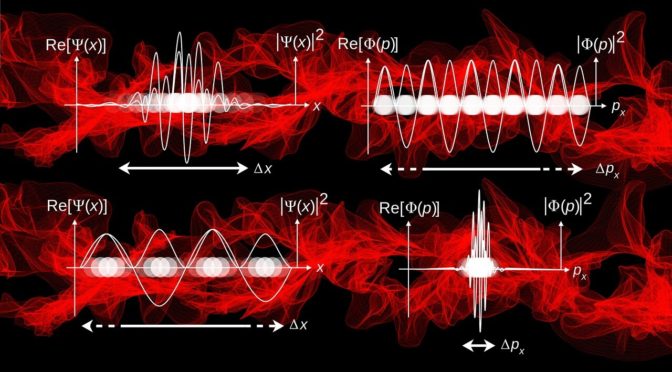Quantum Field Theory (QFT) stands as one of the most pivotal paradigms in modern physics, artfully bridging the domains of quantum mechanics and special relativity. Physicists from various disciplines regard QFT with a quasi-reverential awe, not merely due to its unparalleled success in predicting experimental outcomes but also owing to its philosophical profundity. This article endeavors to elucidate the essence of QFT and the multifaceted reverence it commands in the scientific community.
At its core, Quantum Field Theory posits that particles are not isolated entities; rather, they are excitations or disturbances within underlying fields that permeate the entirety of spacetime. Consider, for instance, the electromagnetic field, which manifests as photons, the quantum carriers of electromagnetic interactions. This conceptual shift from viewing particles as discrete entities to recognizing them as field excitations marks a transformative leap in our comprehension of fundamental interactions.
One of the hallmark achievements of QFT is the unification of different fundamental forces. The Standard Model of particle physics, a comprehensive framework informed by QFT, encapsulates the electromagnetic, weak, and strong nuclear forces. The triumph of QFT in formulating the electroweak theory exemplifies the capacity of this framework to elegantly blend disparate forces into a cohesive theoretical structure. The unification is not merely mathematic; it evokes a deeper inquiry into the underlying symmetry principles governing the universe.
The preeminence of QFT is not solely derived from its mathematical elegance and predictive accuracy but also from its unique treatment of reality. Unlike classical theories that advocate a deterministic worldview, QFT introduces an intrinsic uncertainty. It invokes the Heisenberg uncertainty principle as a fundamental tenet, asserting that certain pairs of physical properties cannot be precisely known simultaneously. This probabilistic nature of particles and their behavior prompts a philosophical introspection about the nature of existence and the limits of human knowledge. Hence, for many physicists, QFT engenders not merely an understanding of the universe but also a broader existential reflection.
A striking feature of QFT is its treatment of virtual particles, ephemeral entities that sublime into existence and vanish within the confines of quantum fields. These elusive particles are integral to the interactions between detectable particles. They mediate forces and contribute to phenomena such as quantum tunneling—where particles traverse energy barriers that classical mechanics deems insurmountable. The concept of virtual particles compels a reexamination of the fabric of reality; it challenges traditional notions of existence and heralds a world where transience is intrinsic to the essence of matter and energy.
Another compelling reason for the veneration of QFT is its versatility across various branches of physics, embodying principles that extend beyond particle physics into condensed matter, cosmology, and quantum gravity. The success of techniques like renormalization, which adeptly addresses infinities arising within QFT calculations, has profound implications. These methodologies not only fortify theoretical frameworks but also facilitate transformative discoveries across diverse realms of scientific inquiry.
Furthermore, the phenomenon of spontaneous symmetry breaking, a cornerstone in the understanding of mass generation via the Higgs mechanism, exemplifies QFT’s ability to provide profound insights into the organization of the universe. Here, the once-invariant laws yield to the emergence of distinct states, engendering particles with mass. This symmetry-breaking paradigm elucidates why fundamental particles exhibit mass, while simultaneously enriching our comprehension of the cohesive forces that govern atomic and subatomic interactions.
While the theoretical construct poses undeniable complexity, the practical implications of QFT resonate through technological innovations. The application of quantum field theoretical principles underpins advances in fields such as quantum computing, superconductors, and even the burgeoning domain of quantum optics. The intricate manipulation of quantum states leverages the foundational tenets of QFT, advocating its relevance far beyond the esoteric confines of theoretical physics.
Yet, despite the staggering successes and insights afforded by Quantum Field Theory, it is not without challenges. The reconciliation of QFT with general relativity remains an elusive quest, leading to endeavors such as string theory and loop quantum gravity. These attempts endeavor to harmonize gravitational phenomena with QFT attributes, unfurling a tangled web of theoretical exploration that continues to captivate physicists. In the backdrop of this intellectual pursuit resides an enduring tension; the more we learn, the more we confront the intricate episodes of nature that evade comprehension.
The reverence physicists have for Quantum Field Theory extends beyond its effectiveness or utility. It inspires awe through its unyielding pursuit of the fundamental truths governing the cosmos. QFT invites a deeper inquiry into the very architecture of reality, challenging conventional paradigms and igniting intellectual curiosity. It serves as a testament to the coherency of nature’s behavior, offering a lens through which we can discern the rules, symmetries, and occasional paradoxes that shape our universe.
In conclusion, Quantum Field Theory embodies a remarkable synthesis of rigorous mathematics and intricate philosophical inquiries. Its reverence among physicists is warranted, fueled by its explanatory power, and the profound questions it poses about existence itself. As we stand at the intersection of observed phenomena and uncharted realms of theoretical speculation, the legacy of QFT continues to enrich our understanding of the cosmos and inspires successive generations of explorers in the ever-advancing frontier of physics.








